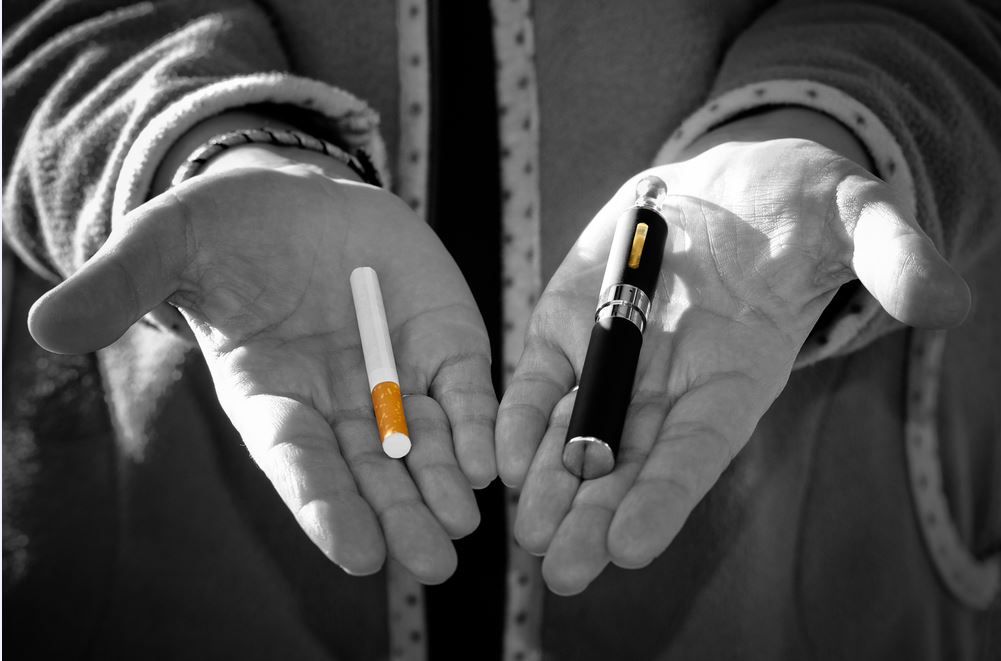Article
Electronic Cigarettes Pose CVD Risks Similar to Traditional Cigarettes
The impact of electronic cigarettes on cardiovascular disease risk factors is similar to effects seen in people who smoke traditional combustible cigarettes with harmful effects on cholesterol, triglycerides and blood glucose, as well as on blood flow to the heart, researchers reported at AHA's Scientific Sessions this month.
(©GianlucaRasile,Shutterstock)

The impact of electronic cigarettes on cardiovascular disease risk factors is similar to effects seen in people who smoke traditional combustible cigarettes with harmful effects on cholesterol, triglycerides and blood glucose, as well as on blood flow to the heart.
These findings were reported in two studies presented at the American Heart Association’s (AHA) Scientific Sessions held this month in Philadelphia.
Smokers who use electronic cigarettes under the impression these devices can aid in quitting cigarettes altogether, should probably stop, said Rose Marie Robertson, M.D., AHA's deputy chief science and medical officer, in an AHA press release. She points to the paucity of long-term safety data and the expanding body of information describing a range of negative physiologic effects of the devices themselves as well as the chemical compounds used in them.
In the first study, which links e-cigarettes to alterations in lipid profiles, Sana Majid, M.D., a postdoctoral research fellow at Boston University School of Medicine, and colleagues compared cholesterol, triglycerides, and glucose levels in healthy adult nonsmokers, electronic cigarette smokers, and dual electronic cigarettes and traditional cigarette smokers (dual smokers). (AHA oral presentation Mo3106)
The 476 participants from the "Cardiovascular Injury due to Tobacco Use" (CITU) study were aged 21-45 years, free of cardiovascular disease and taking no daily medications. They included 285 traditional cigarette smokers, 94 nonsmokers 45 electronic cigarettes smokers and 52 dual smokers.
Electronic cigarette users were predominantly dual or former smokers and were overall younger, with more men and fewer blacks in the group.
Traditional cigarette users had lower high-density lipoproteins (HDL) levels and higher levels of glucose, total cholesterol, low-density lipoproteins (LDL), and very-low-density lipoprotein vs nonsmokers. Exclusive electronic cigarette use remained associated with elevated total cholesterol, triglycerides, and LDL vs nonsmokers (all P<.05) in multivariate regression models adjusted for age, race, and sex. Dual cigarette use was associated with lower HDL-C (P<.01).
The findings suggest that traditional cigarette smokers who concurrently use or switch to electronic cigarettes may not experience appreciable metabolic benefits. "Although primary care providers and patients may think that use of e-cigarettes by smokers makes heart health sense," Dr. Majid stated. "...the best option is to use FDA-approved methods...along with behavioral counseling."
SECOND STUDY
In the second study, "Coronary endothelial dysfunction more persistent with e-cigarette use," coronary vascular dysfunction associated with electronic cigarette was found to be worse than from smoking traditional cigarettes (AHA oral presentation Sa3199).
E-cigarettes purportedly deliver a lower dose of nicotine per inhalation vs combustible cigarettes and thus have been marketed as a safer alternative. However, authors write in their abstract: "Each e-cigarette inhalation delivers an aerosolized bolus of poorly-characterized ultrafine particles with potential cardiovascular effects that remain unclear."
To assess coronary vascular function, authors analyzed change in myocardial blood flow after acute exposure among self-reported chronic electronic cigarette (n=10) and chronic tobacco cigarette (n=9) users, aged 24-32 years. After overnight abstinence, acute increase in myocardial blood flow was measured via myocardial contrast echocardiography after exposure to one use (15 puffs in 7 minutes) of a popular electronic cigarette or one cigarette (Camel Filtered) while participants were at rest and again during post-handgrip cuff ischemia.
FINDINGS
For traditional cigarette users, myocardial blood flow increased modestly after inhalation then decreased with subsequent stress. And, for electronic cigarette users, myocardial blood flow decreased both at rest and after handgrip stress suggesting chronically abnormal coronary vascular function.
“We were surprised by our observation of the heart’s blood flow being reduced at rest, even in the absence of stress, following inhalation from the e-cigarette,” said study co-author Susan Cheng, M.D., MMSc, MPH, director of Public Health Research at Cedars-Sinai Medical Center, Los Angeles.
“Providers counseling patients on the use of nicotine products will want to consider the possibility that e-cigs may confer as much and potentially even more harm to users and especially patients at risk for vascular disease,” she said.
For more news from the American Heart Association’s (AHA) 2019 Scientific Sessions, visit our sister site Patient Care Online.





